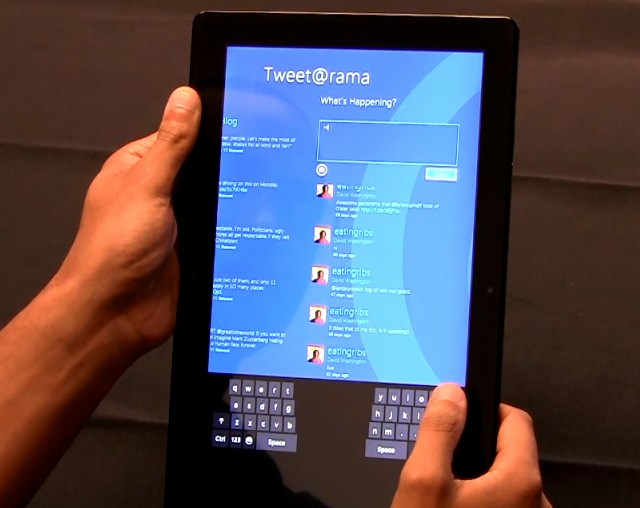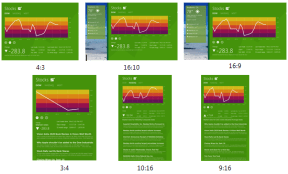Most people right now think of Windows 8 as Microsoft’s big tablet effort. But I wonder whether it will ever actually be installed on more tablets than traditional laptops and desktops. After all, it’s not just Windows 7 Tablet Edition — it’s the next version of Windows, period.
But there’s an wrinkle on tablet systems that has to be addressed that rarely, if ever, comes up on laptops: orientation. While very few people use their display in portrait mode, it’s extremely common to do so on tablets. Many apps and webpages work better when displayed vertically. So far, so normal for a tablet interface, but it must be just a little demoralizing to be working on something that a majority of users will never once encounter. Still, it must be done and they seem to be doing it well.
The stylized look of the Metro interface means it’s no small task to redo some apps, but they understand the usage scenarios and make things work. I like that things are optimized for thumb work in portrait mode, since it’s more likely you’ll be holding it with both hands in that situation (as opposed to it sitting in a stand or on a table, when it is more likely to be in landscape).

But I don’t really agree with this sentiment here:
We’ve received questions and feedback about whether Windows 8 is “landscape first” or “portrait first.” Our point of view is that both portrait and landscape orientations are important, and experiences can be great in either orientation. Rather than picking a posture and orientation for optimization, we designed an experience that makes sense regardless of how the device is held, one that feels tailored for the app and its content.
While choice should certainly be allowed, it seems like they’re prohibited from making some strong design decisions by refusing to take sides on this. I’m not saying every app should be locked into one orientation, but at the same time, I think it’s useless to pretend that some won’t work better in one or the other. But then again, there’s no accounting for user preference, and people would likely be frustrated if they tried to turn their favorite app on its side and only got an indication that this wasn’t possible.
Even if the experience is “worse,” it’s a user choice that can’t be ignored. That’s the kind of restriction Apple is willing to Make, but not Microsoft (unless they have to) — it’s two schools of design, and both have their advantages.
In the post, they also reveal that the minimum resolution that will support all of Windows 8’s UI features (multitasking, charms, etc) will be 1366×768. The way things are going, that many pixels could be fit onto a 5″ screen before long. I’m not sure I’d want that, exactly, but it’s a fun idea.
